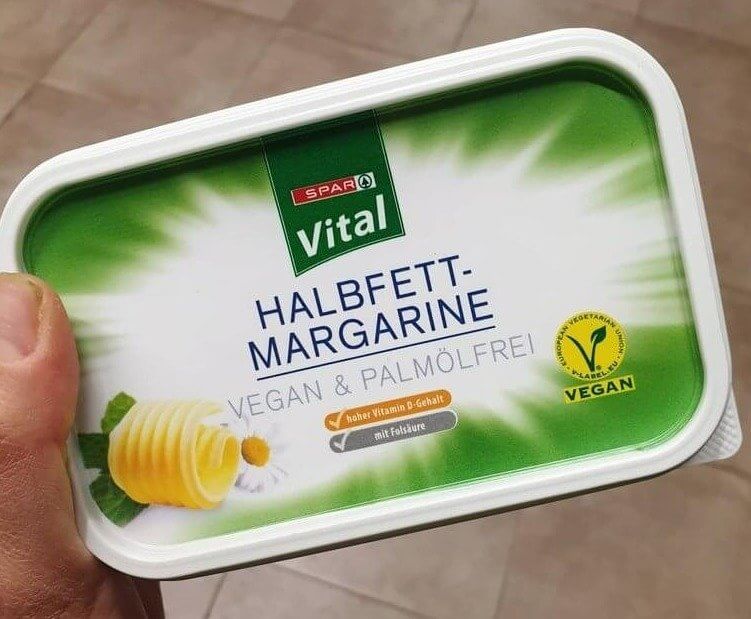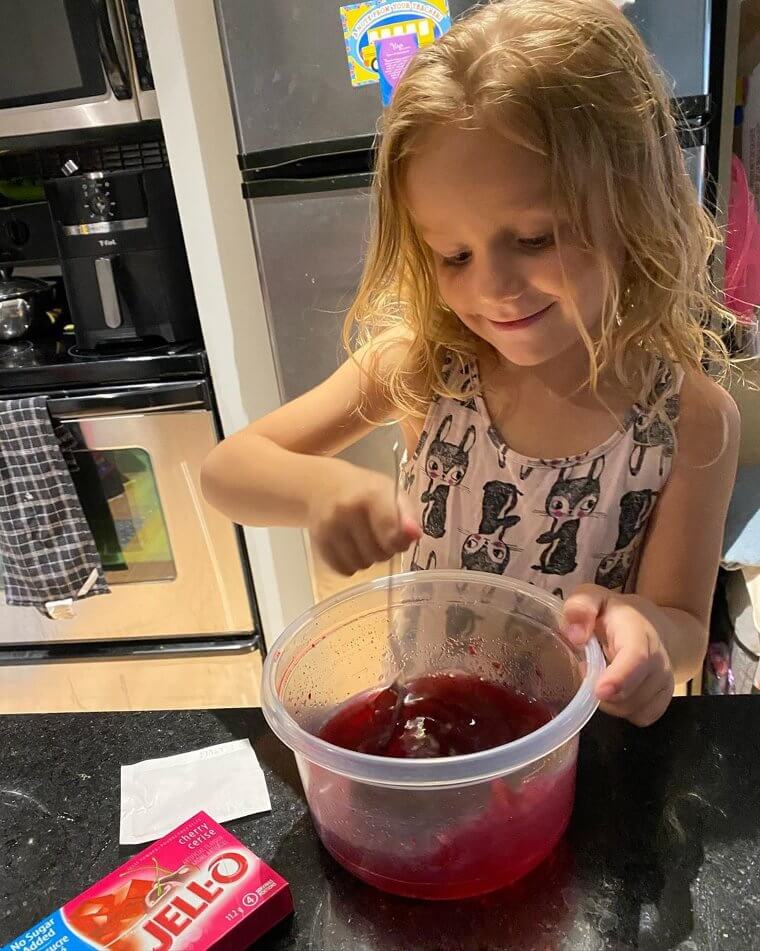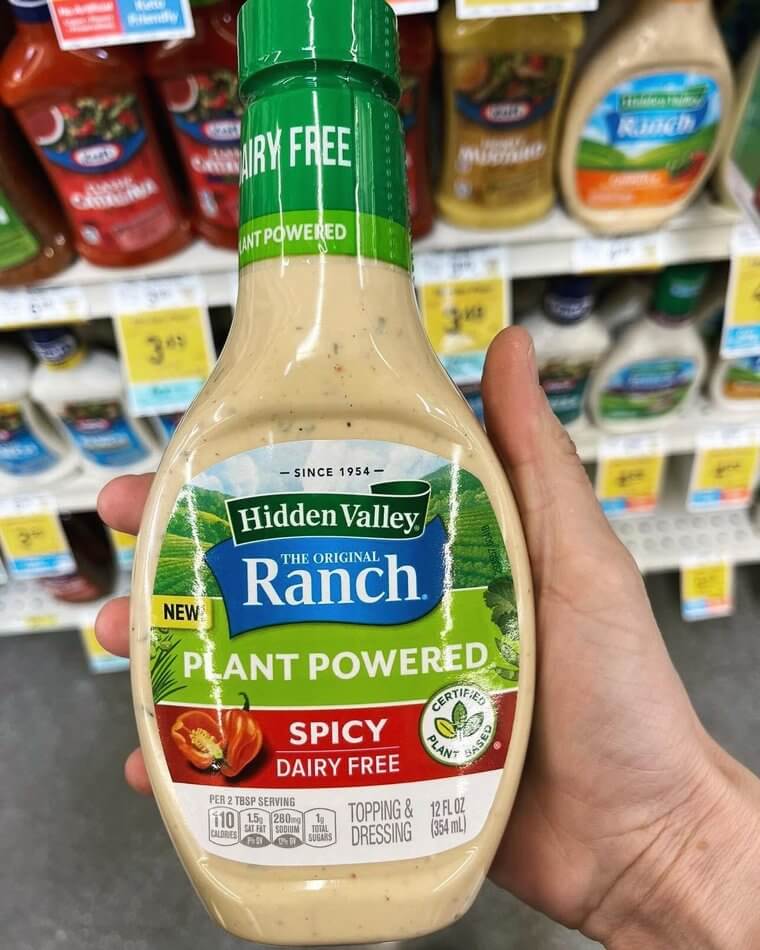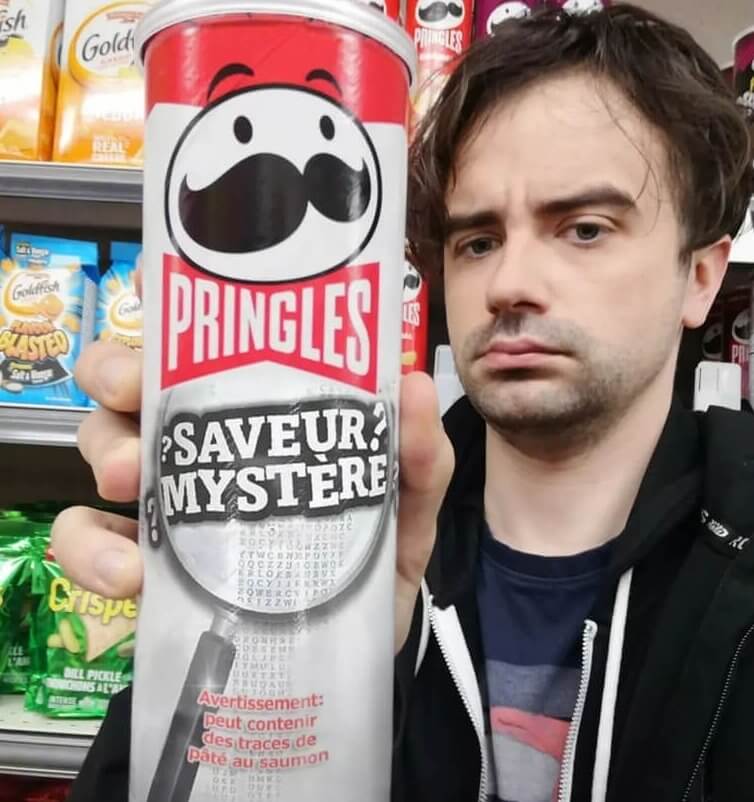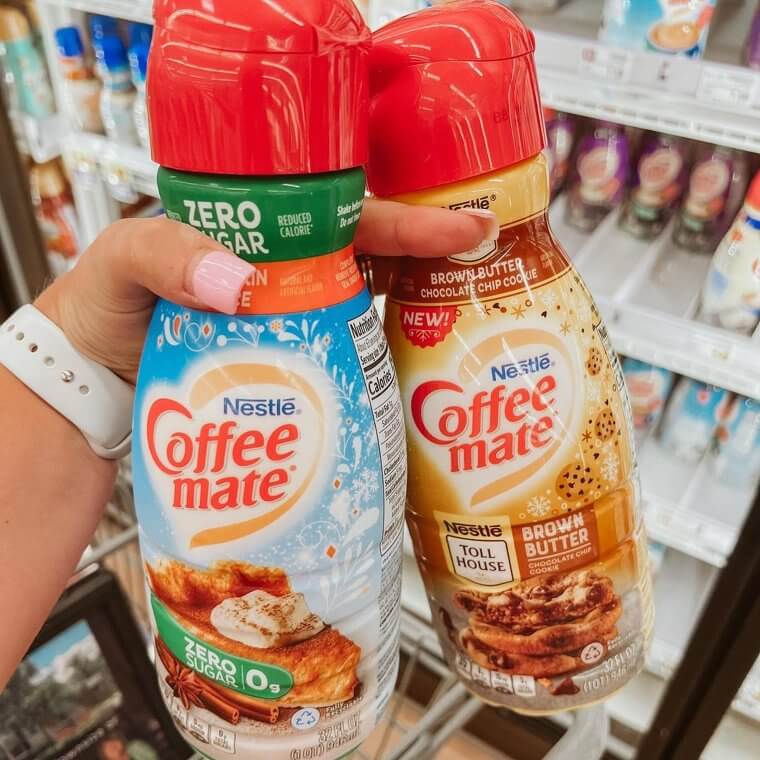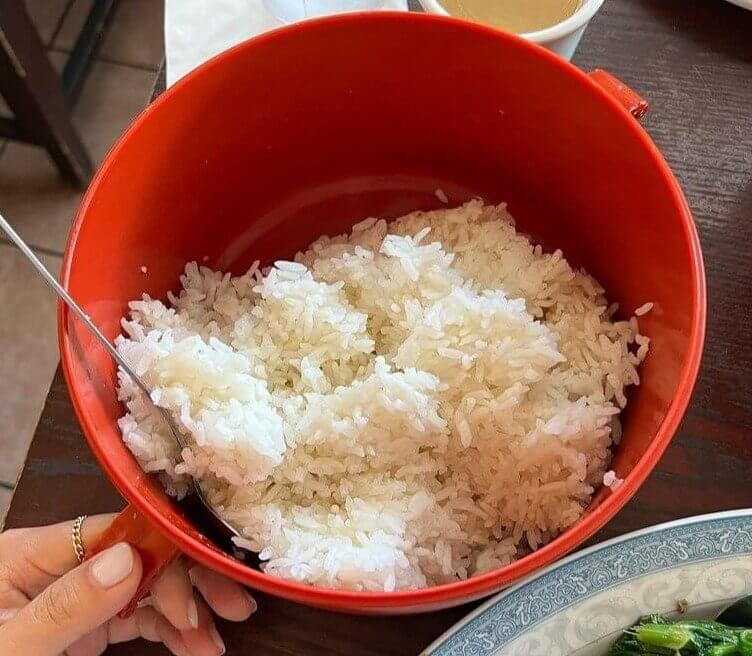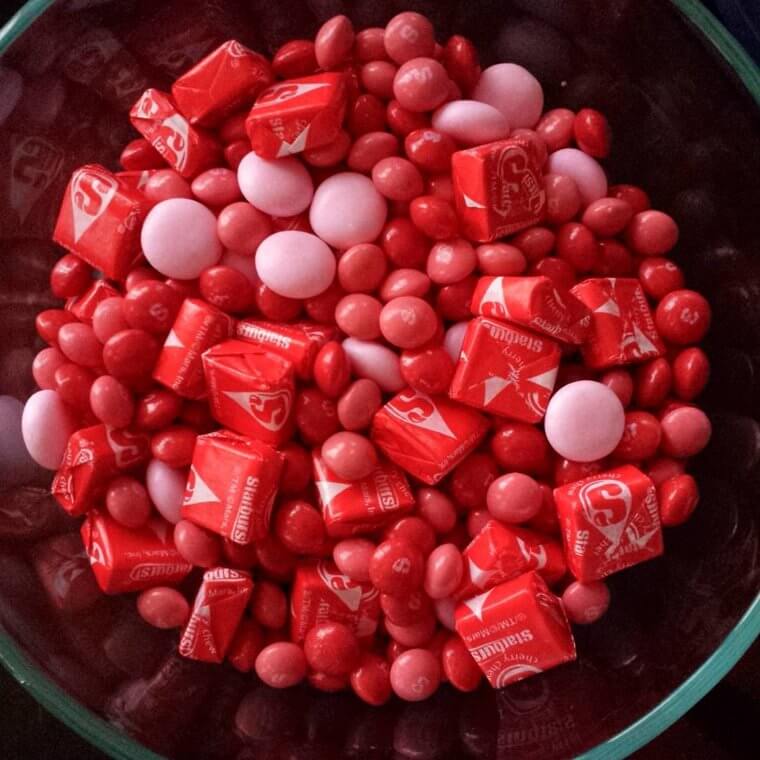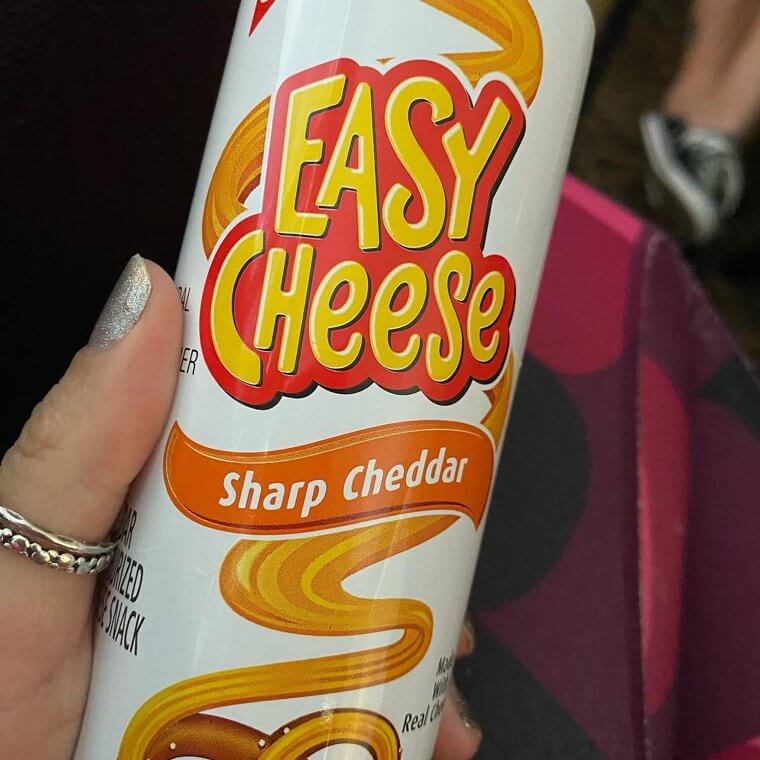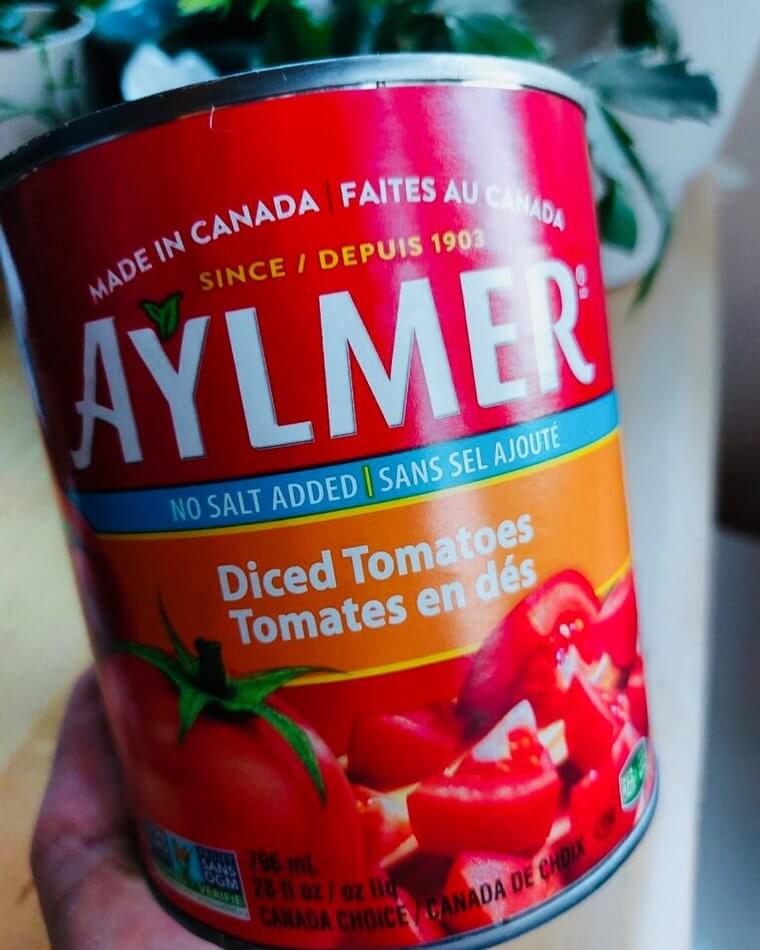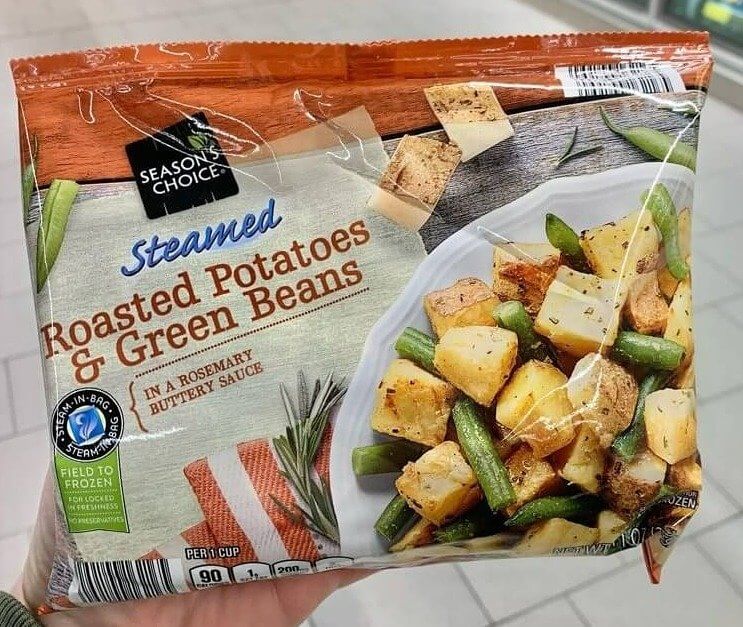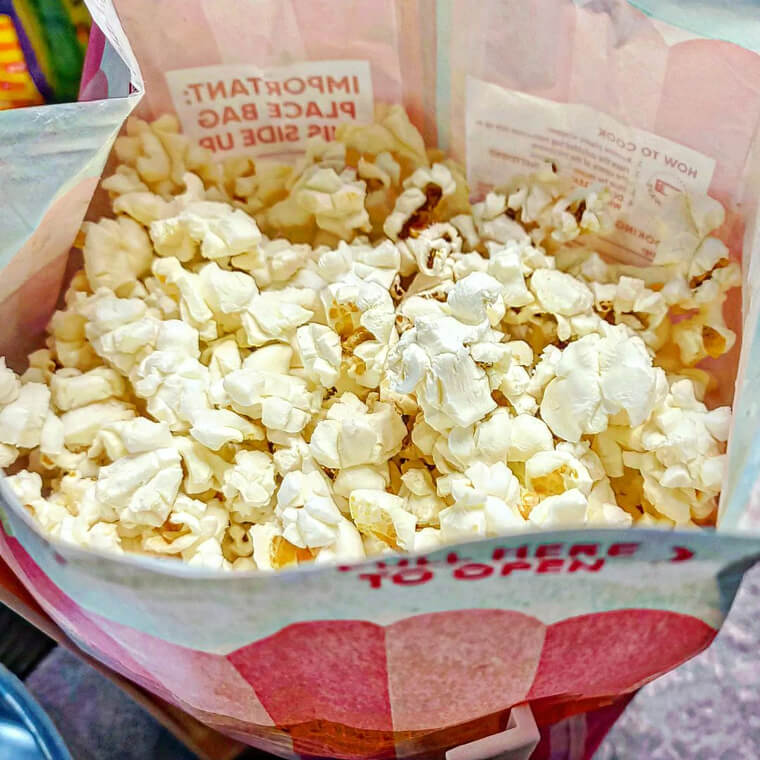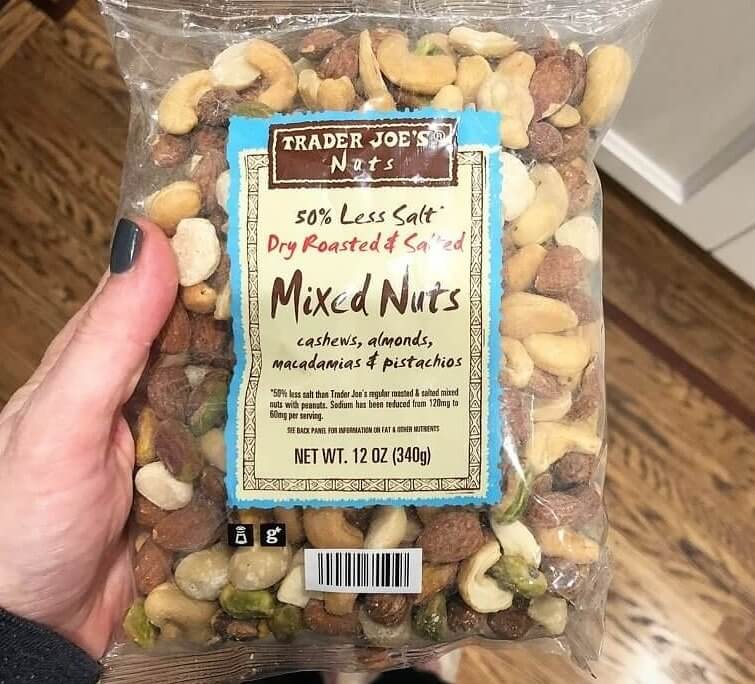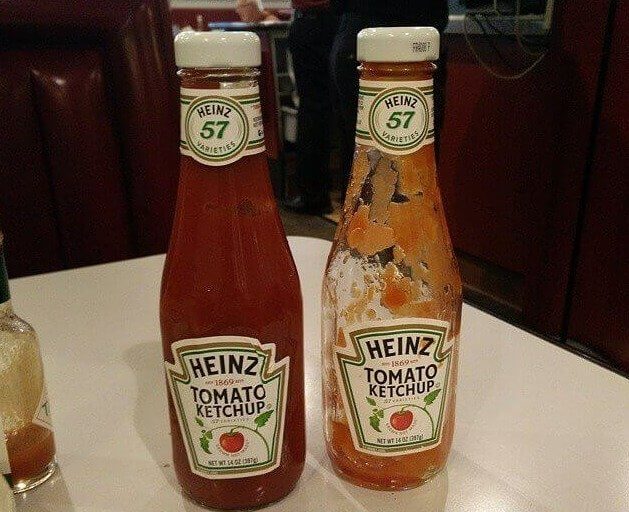Is Margarine Chemically Close To Plastic?
This was a hot debate for a couple of years, but someone claimed that margarine was only one chemical compound away from being plastic. The discussion also claimed that it was initially made as turkey feed. The second claim is untrue, but margarine does have a tumultuous history. French emperor Napolean III wanted a cheaper alternative to butter and offered a prize to whoever could provide it. A French chemist eventually created margarine to win the prize around 150 years ago.
So with that out of the way, is margarine chemically close to plastic? Not really. On a chemical level, many margarine used to be chemically similar to plastic, but they've changed since then and still have always been more similar to butter than plastic.
Peanut Butter Is Notorious For Rodent Hair
If you've ever gone to a restaurant and felt freaked out after discovering human hair in your food, then you're really not going to like this one. The FDA actually has a limit for the amount of rodent hair allowed in peanut butter. That limit is one hair per every 100 grams. So, if you've ever eaten peanut butter in your life, then odds are you've consumed rodent hair.
They also have a limit of around 30 fragments of insect parts per every 100 grams, but in this case, we think rodent hairs are slightly worse.
The Dye in Sports Drinks Is Linked to Long-Term Health Conditions
Sports drinks might seem like a lifesaver after a heavy night of drinking, but realistically there are probably better alternatives out there. This is because these items contain a good amount of sugar; like, a lot of sugar. Around 36 grams, to be exact, which is approximately nine teaspoons, all packed into a single bottle. Researchers have also raised issues with the types of dyes used in some sports drinks. Medical papers have been released linking some of these dyes to severe long-term health conditions, including ADHD and hyperactivity.
Of course, that's just the links researchers have established, and there's no telling what these chemicals can do to the body.
Powdered Soup Actually Uses Sand
Okay, that title might be a bit misleading. Powdered soup doesn't actually incorporate dirt exactly. It's more like sand. A lot of companies will put a small amount of sand in their powdered soup so that the texture is just right. It's kind of similar to how shredded cheese uses sawdust to keep from clumping up. However, we'd be lying if we said that the thought of eating sand with our soup didn't freak us out a little bit.
This one might not surprise some, considering a lot of reviews out there for different powdered soups say it tastes a bit too "gritty." If you've ever thought the same thing, then now you know why.
Shredded Cheese and Wood Pulp
That's right, store-bought shredded cheese often contains something called cellulose, which is just a term someone from marketing probably thought of to hide the fact that it's wood pulp. They add the pulp, or sawdust if you like, to ensure that the shredded cheese doesn't clump up in the bag. Luckily, it's not supposed to be harmful for human consumption, at least not in the amount they add to cheese.
Still, it's going to be hard not to think about getting a splinter or something next time we go out and see shredded cheese at the store.
Would You Like Some Shoe Polish With That Donut?
You've likely heard the term carnauba wax when talking about a shoe or car polish. A lot of car washes will even advertise it as a selling point. So, it's funny that some donut companies don't use it quite as often in their advertising. It's the ingredient some of them use to make sure their donuts look nice and shiny. They probably don't use as much as a car wash in their product, but still.
We should also probably mention that carnauba wax comes from a certain type of tree, so we guess at least it's somewhat natural.
Vanilla Ice Cream And Beaver Butts
As you might've surmised from the title, this one is really weird. The distinct vanilla flavor that is used in most brands' vanilla ice cream actually comes from the butts of beavers. Technically, it's called castoreum, but let's call it what it is. Many other mammals have similar glands near their bums that are used to mark territory, but the distinct taste of beaver secretion comes from their diets.
The FDA has declared that castoreum is safe for human consumption. Still, because of the delicate nature of the term "beaver butt," many companies choose to instead list it as "natural flavoring."
Sliced Bread Is Sometimes Made With Human Hair
If you've ever gone to a bakery and bought a homemade loaf of bread, then you probably noticed how quickly it went bad compared to sliced bread bought in supermarkets. That's because homemade bread usually doesn't contain preservatives like L-cysteine. It's basically what makes it possible to sell sliced bread in supermarkets around the U.S. However, it has a pretty big and gross secret: it's sometimes made from human hair.
L-cysteine is made from hair that's boiled down into a preservative and usually comes from salons in China. Yeah, what's keeping some of your bread fresh is just people's hair.
How Cow, Pig, and Fish Bones Factor Into Gelatine
You might not have known that cow, pig, and fish bones are used to make jello, but odds are you've heard of gelatin. Gelatin is derived from the boiled bones and other tidbits of cows, pigs, and fish and then somehow processed down to become the main ingredient in jello. So, every time you ate jello as a kid, you were basically just eating the bouncy remains of animal bones. Yum!
Of course, this is probably one of the reasons Jello-O swapped a couple of letters to spell gelatin differently. It was actually a genius marketing technique because we never would've associated the two otherwise.
Watch Out With Imported Shrimp
When it comes to any type of seafood, freshness is king. However, in recent years, shrimp specifically have been found to contain harmful things like pesticides, feces, and cockroaches. That's because imported shrimp from abroad has become increasingly popular. But some of the imported shrimp comes from industries in countries where rules and regulations are pretty relaxed regarding food and health safety.
Some boats linked to this industry have also been caught using unethical labor. So, the next time you're craving shrimp, check the origin.
Orange Juice Often Isn't As Fresh As It Seems
Orange juice was always touted as a healthy breakfast staple when we were growing up. However, it's now known that besides containing a lot of added sugar, many companies also inject their orange juice with chemicals. One of the most common is something called ethyl butyrate, which companies use as artificial flavoring. Yes, instead of offering you freshly squeezed orange juice, those companies are essentially just serving you a chemical mixture.
It's not all bad; many chemicals are just concentrated forms of themselves. Still, if you want an orange juice that tastes better and is fresh, you will have to more than likely squeeze your own.
The Link Between Salad Dressing And Paint
If you've ever poured salad dressing onto a salad and thought to yourself, "Oh wow, that kind of looks like white paint," then you actually weren't too far off. Many salad dressings contain an abundance of chemicals, one of which is titanium dioxide. The chemical is used in things like paint and sunscreen to give them a sheen. Luckily, it's generally considered safe for human consumption, and it's actually naturally occurring.
Another chemical commonly found in salad dressings is propylene glycol, also used in anti-freeze. That might sound pretty bad, but it's only known to be harmful in high doses. It can cause seizures, cardiac arrhythmia, and central nervous system problems when it reaches toxic levels.
Chewing Gum And Sheep
Chewing gum is often one of those candies that are held up and linked to things like bugs, but there's actually an even worse ingredient used to make chewing gum. Many companies use something called lanolin to give their gum its texture. This is basically a secretion from the wool of a sheep. Think the same type of secretion that humans leak from their pores, and you're nearly there.
On a side note, lanolin is also used in some skin care products as a natural alternative to chemical-based skin care products because of its fat.
Hot Dogs Are Filled With Chemicals Connected to Cancer and Diabetes
It's no secret that hot dogs are bad for you, but we often choose to ignore this fact anyway. After all, hot dogs are a cook-out and baseball game staple and usually taste delicious. However, they contain a heck of a lot of chemical preservatives. Among those are nitrates, which have been heavily linked to cancer. Time magazine reported that processed meats were linked to much higher rates of bladder cancer.
People who incorporated a lot of hot dogs and other processed meats into their diets were also found to have higher rates of type 2 diabetes.
There's More Than Cacao In That Chocolate Bar
Many chocolate bars come in packaging with a long list of chemicals. However, we're not here to talk about that. Instead, we're going to talk about the bugs in your chocolate. Yes, on average, researchers say every chocolate bar contains around eight bug legs in it. We suppose it's impossible to ensure that food is never contaminated by anything, but we're still never going to look at chocolate the same way again.
We probably shouldn't mention this part, but the insects in your chocolate bar aren't just insects. According to a report from NBC News, they're usually found to be cockroach parts.
The Link Between Potato Chips And Toilet Bowl Cleaners
Many potato chips have long gotten flak for containing a long list of chemicals while skimping on actual potatoes. However, one chemical, in particular, is used to make some chips that many people don't know about. That's Sodium bisulfate. It's the same chemical found in many household cleaners you probably have lying around your home, including toilet bowl cleaners. Now, why would potato chips need this? We aren't exactly sure.
And while there's not the same amount in a can of chips that you'd find in a toilet bowl cleaner, it's still pretty sickening to think about.
Some White Flour Actually Contains A Deadly Chemical
Plain, white flour might seem innocent enough; it's, after all, one of the oldest ingredients around. People have been producing flour from grains for centuries. But, for some reason, humans recently decided it was time for a change, and now some companies add chlorine dioxide to their flour. Researchers have found that breathing in this chemical can seriously irritate the lungs, which is even more problematic considering the consistency of flour.
Manufacturers add it to their flour to make it look more white, but do we really need to add an extra chemical to something as simple as flour just to make it look a particular color?
Canned Soup Of Chemicals
Canned soups might just be some of the most iconic items of the 20th century, but it turns out they have a secret. It's not all that great for you, considering the absurd amount of salt it contains. There's also the fact that most brands of soups contain chemicals. They also include a healthy dose of msg with their soups. Just one canned soup can have about half your daily sodium limit.
Also, many canned soup containers contain BPA, which has been linked to everything from disrupting normal bodily functions to Alzheimer's disease. So, always research what brands do and don't contain BPA in their packaging when buying canned soup.
Pork Rinds
Let's be real here: pork rinds are a great snack. But, you can taste the absurd amount of sodium in every bite. Still, that's probably not the most alarming thing about pork rinds. Many commercial companies pack their rinds with preservatives and artificial chemicals, which, on top of the already high amount of sodium, is really bad for you. However, like beef jerky, there is hope out there for fans.
Pork rinds made by smaller companies or in smaller badges don't have to have an absurd amount of sodium or preservatives. They're usually made from better quality pork, too.
Beef Jerky Is Dangerously Packed With Sodium
Beef jerky is a great little snack for just about any outing, but it has one major drawback. It contains a lot of sodium. It's basically part of the process used by most commercial beef jerky companies. On average, around a single piece of commercial jerky contains 416 milligrams of sodium, meaning a single bag with five pieces is around half the daily limit. With that said, there is some good news for jerky lovers.
Homemade jerky can often contain little to no salt at all. Not only that, but it tastes 20 times better than store-bought and can be considered healthy-ish since it's packed full of good protein.
Coffee Creamer Is Basically Just Oil
If you prefer your coffee with cream, then it's possible that all you were doing was adding oil to your coffee. This certainly isn't true with all coffee creamers, but for some reason, certain kinds decided to use a lot of oil in their mixture. There are other things in there, too, such as water and syrup solids, but there's also a lot of soybean oil.
Some brands often contain a bit of oil or trans fat. And here we were always thinking coffee cream was just basically milk.
Instant Ramen And Preservatives
Instant ramen is a 20th-century miracle food. It's cheap, it's good, and it's super easy to make. But there had to be some drawback, right? Well, there is. Instant ramen is packed full of sodium, msg (AKA monosodium glutamate, a flavor enhancer), and preservatives. Taken together, these ingredients have been linked to stomach cancer and heart issues. Yea, pretty nasty stuff, right? However, it isn't all bad news when it comes to instant ramen.
While it's definitely not the healthiest food out there, instant ramen contains some redeeming qualities, including high vitamin B, manganese, and iron.
Milk Can Cause Harmful Hormonal Imbalances
Milk has caught a lot of flak in recent years, some deserved and some not so deserved. However, some studies have linked milk to changes in hormones in both men and women, which shouldn't come as a surprise considering how vital it is to early development. Cow's milk was shown to increase female sex hormones while decreasing sex hormones in men. It also did some pretty weird stuff to estrogen levels.
Estrogen levels in men, women, and children increased significantly during the study, and a separate paper linked milk to breast growth and prostate tumors because of hormonal changes.
Arsenic Loving Rice
Arsenic, alongside mercury, is probably one of the most widely known toxins in the environment. Even its name sounds insidious. However, not many people know that a pretty basic staple food has a dirty habit of sucking up the arsenic in its environment. Rice, which is a pillar of millions of diets around the world, is also known for containing alarming levels of arsenic. However, researchers think that it's unlikely most rice contains enough arsenic to cause people any serious damage.
Still, they say you shouldn't eat rice in large quantities every day. There are also certain types of rice that are known to carry more arsenic than others.
Be Careful Which Frozen Dinners You Bring Home
People in the U.S. get a lot of flak for relying heavily on frozen dinners, and for a good reason. It turns out that frozen foods contain high amounts of sodium, fat, and calories apart from all the chemicals and preservatives used. These are all things that are needed but aren't good in large doses. However, there's still hope for some who want to skip the whole making-your-own-dinner thing after a long day of work.
Companies that make frozen foods with healthier ingredients have started to make their way into the market, and now it's possible to grab a frozen dinner that won't be too bad for you.
Some Fish Contain High Levels Of Mercury
This one only applies to certain fish, but many of them have been known to contain high levels of mercury, which can be extremely harmful to human health. Swordfish are one of the worst offenders as it tends to absorb a lot of mercury from their prey. However, there are many others. Generally, this affects saltwater fish with longer lifespans, such as sharks and some types of tuna, but bass has been known to sometimes be high in mercury.
If you're ever in doubt, most state and federal agencies have warnings on their websites, and sometimes state wildlife agencies will release notifications when they find fish in a particular area with higher levels of mercury.
Can You Guess How They Make Candies so Red?
Ever wonder what gives candy its bright, pleasing color? In many cases, companies use dyes that probably aren't great for your health. However, red candy usually doesn't have that issue. Instead, a lot of companies use carmine to give their candy red coloring. And while it might sound like a chemical, it's actually from the stomach of a female beetle. It might sound gross to some, but it's actually better than using chemicals, in our opinion.
However, it's still sometimes simply listed as Natural Red #4, despite just being the crushed insides of a South American bug. They are also used heavily in the cosmetics industry.
Carbon Monoxide Is Keeping Your Red Meat Red
Getting packaged meat from the deli at your local supermarket might seem like a fresher alternative to frozen foods, but that isn't necessarily always the case. The truth is a lot of meat processing facilities will inject chemicals into their meat to make it look fresher for longer. To do this, they'll often use carbon monoxide. It's in low enough quantities that it's legal, and it's not supposed to be harmful, but this is still the same thing emitted from your car.
It can also be harmful because meat can go bad, and you wouldn't be able to tell just by looking at it. Of course, it should still smell rancid if it's not safe for consumption.
Raspberry Popsicles and Beaver Butts
Despite their name, raspberry popsicles don't actually get their flavoring from raspberries. Instead, it comes probably the unlikeliest of sources — beaver butts. One of the key ingredients in raspberry popsicles is actually castoreum, which is a secretion from the glands on a beaver's behind. It's pretty gross to think about, but people have been using it for nearly a century. We're also not sure how in the world humans managed to figure that one out.
Because the process of getting the secretion is so, well, unpleasurable for all parties, a very small amount of it is harvested every year and acts as a concentrate.
Canned Cheese
We're pretty sure there isn't a soul out there who'd claim that cheese in a can is good for you. All you have to do is hear the name and your brain immediately goes, "That doesn't sound natural." Well, it turns out that one of the main ingredients in canned cheese isn't all that unnatural at all. It's curdled milk. It's not exactly appetizing, but it's still not as bad as some of the things on this list.
Curdled milk is most often associated with the lumps that form in spoiled milk, and while curdled milk can form that way, it can also form by simply being heated.
Canned Tomatoes And BPA
While nearly all cans used for food contained BPA until relatively recently, canned tomatoes were more susceptible to the chemical. That's because tomatoes are highly acidic, and they've been found to slowly degrade the lining in cans, which leads to the release of BPA. The chemical itself has been linked to a plethora of health issues, everything from increased cancer risks to neurological disorders.
However, as people have become more aware of the risks surrounding BPA, some canning companies have stopped using the chemical. It's still a good idea to check online before buying your favorite brand of peeled tomatoes, though.
Unnaturally Orange Food And Drinks
We have to admit, even as kids, something seemed off about the orange color of SunnyD. Well, turns out there is. The company uses a couple of special dyes to give the drink its signature color, and these dyes are used in a number of other products like popsicles and candies as well. They're called Yellow Dyes 5 and 6. Researchers believe that they may contribute to causing some types of cancer.
In fact, the link is apparently so strong that countries like Finland and Norway have banned their use of foods completely. Other European countries require that foods with these dyes contain a warning label.
The FDA Is Cool With Bugs Apparently
As mentioned in some of the other posts on this list, a certain amount of contamination is acceptable when talking about foods. However, the FDA sets the limit at a surprising number when it comes to certain foods. For example, frozen broccoli is allowed to contain around 60 aphids, thrips, or mites for every 100 grams. That's a lot of little critters for every 100 grams of frozen vegetables.
It kind of makes you wonder what people were eating before modern processing techniques, or even if the number counts might've been slightly lower. Either way, aphids aren't as bad as some of the other insects found on this list.
Making Diet Soda Taste Good
Companies like Coca-Cola have long sought to give consumers a "healthy" alternative to their traditional drinks. But how do you do that when it's mainly sugar that gives soda its feel-good flavor? You add in a different artificial sweetener, of course. A lot of companies turned to something called aspartame. It's around 200 times sweeter than traditional sugar, and it's supposed to contain fewer calories. However, it still has a couple of serious drawbacks.
It's been linked to diabetes and certain types of cancers. It's even been accused of blocking proteins responsible for some weight loss.
Microwavable Popcorn
Microwavable popcorn is often touted as a tasty yet healthy snack. And in many regards, it is, but the bags it comes in also usually contain non-stick chemicals. That wouldn't be such a big deal if they used something similar to cooking oil, but instead, many popcorn bags have been known to use chemicals similar to those used in Teflon pans.
Many researchers have labeled the chemicals found in popcorn bags and others "forever chemicals," meaning that once they're in your body, there's no getting rid of them.
The Notorious Nuggets
When most people think about processed foods, they think about chicken nuggets. They're just not natural, right? McDonald's even has an entire section on its website dedicated to debunking a myth that they're made out of pink slime. So, while they're not exactly made out of pink slime, they still usually contain harmful preservatives and chemicals. A common chemical in chicken nuggets is TBHQ, which has been linked to liver and vision issues.
However, the FDA maintains that the amount permitted in foods in the U.S. actually doesn't pose any risk to humans. At least not as much harm as the so-called pink slime would if it were true.
Granola Bars Are A Lie (Sort Of)
This one might come as a shock to many, but granola bars are usually not nearly as healthy as their advertising makes them out to be. You know that fit man or woman they always seem to have on their box? Well, it turns out they probably weren't consuming store-bought granola bars because they usually contain a lot of sugar. That's not to say they're all bad, but definitely check the ingredients before buying.
Or you could do one better and just make your own granola bars at home. It's actually not that difficult, and there are plenty of tutorials out there on the internet.
Be Picky When Buying Nuts
Nuts are one of those foods that are difficult to classify as being either healthy or unhealthy. It really all depends on what kind you buy. For example, salted nuts usually have an unhealthy amount of sodium, and other flavors of nuts aren't much better. It's best to go the plainest you can find, but even this is often not enough, as simple roasted nuts can potentially be extremely harmful to your health.
The process of roasting nuts can sometimes lead to the production of acrylamide, which among other things, can cause nerve damage in humans and is thought to be a carcinogen.
We're Not Loving The Chemicals In Fries
Fries don't always come to mind when thinking about preservatives and chemicals since they're seemingly pretty simple items. Well, turns out some french fries contain around 19 ingredients in total, much of which are introduced during the frying process. Among them are tertiary butylhydroquinone and dimethylpolysiloxane, the latter of which is meant to keep oil from splashing. Sounds pretty weird, right? Yeah, we weren't expecting it, either.
Tertiary butylhydroquinone is thought to be safe by the FDA in the U.S., but it's banned in Japan. Some researchers have also linked it to the liver and other health issues.
Ketchup Is Really Unhealthy
Ketchup isn't just popular in the U.S.; it's popular around the world. But, the lovable condiment is actually really bad for your health, despite its main ingredient being a vegetable (or fruit, depending on your point of view). That's because ketchup is packed with high fructose corn syrup. We've all heard of corn syrup, right? It's the really unhealthy sugar alternative researchers have been warning the public about for years.
High fructose corn syrup has been linked to things like obesity, heart disease, and toxic contaminants in the brain that are thought to diminish people's ability to learn and retain information.
